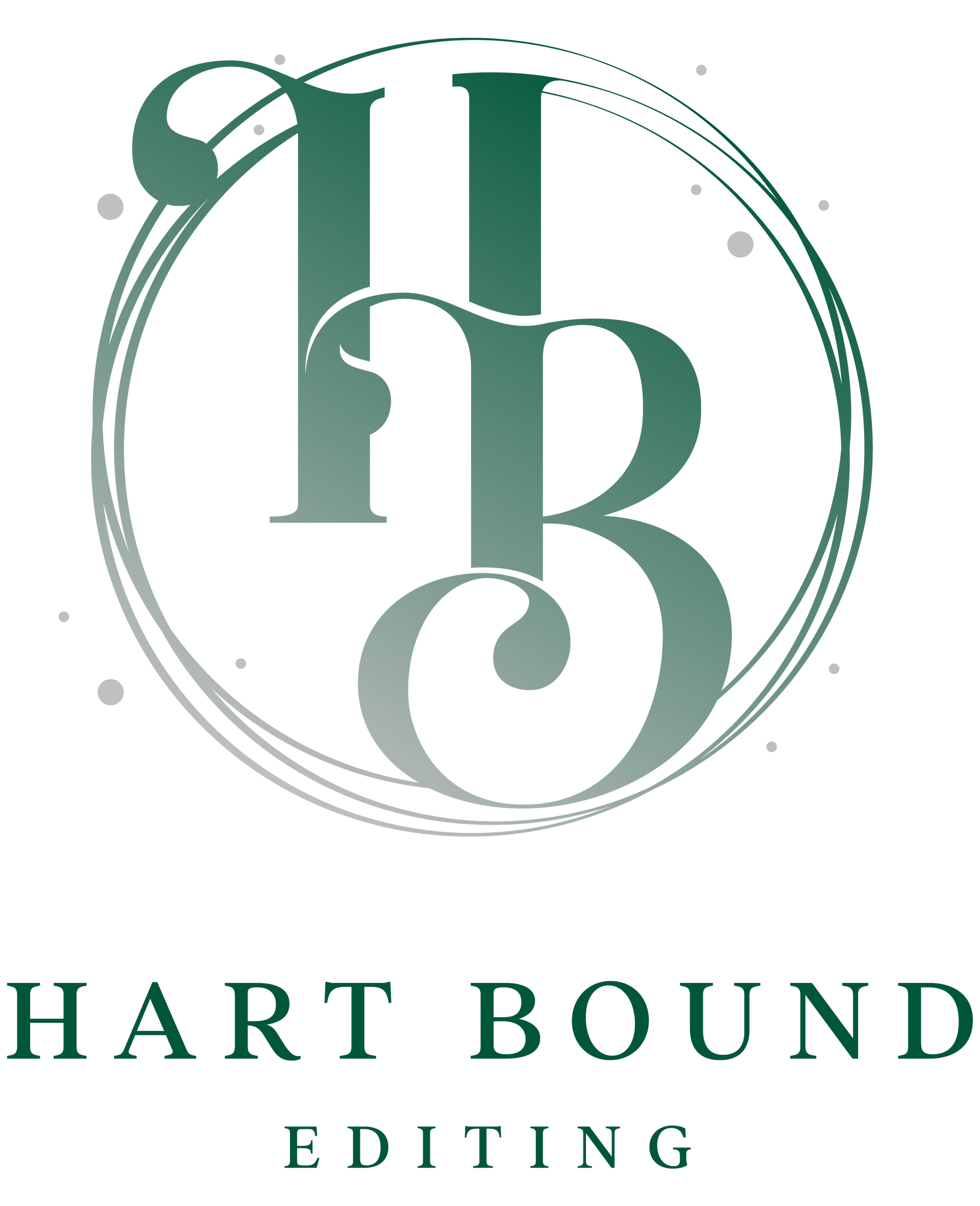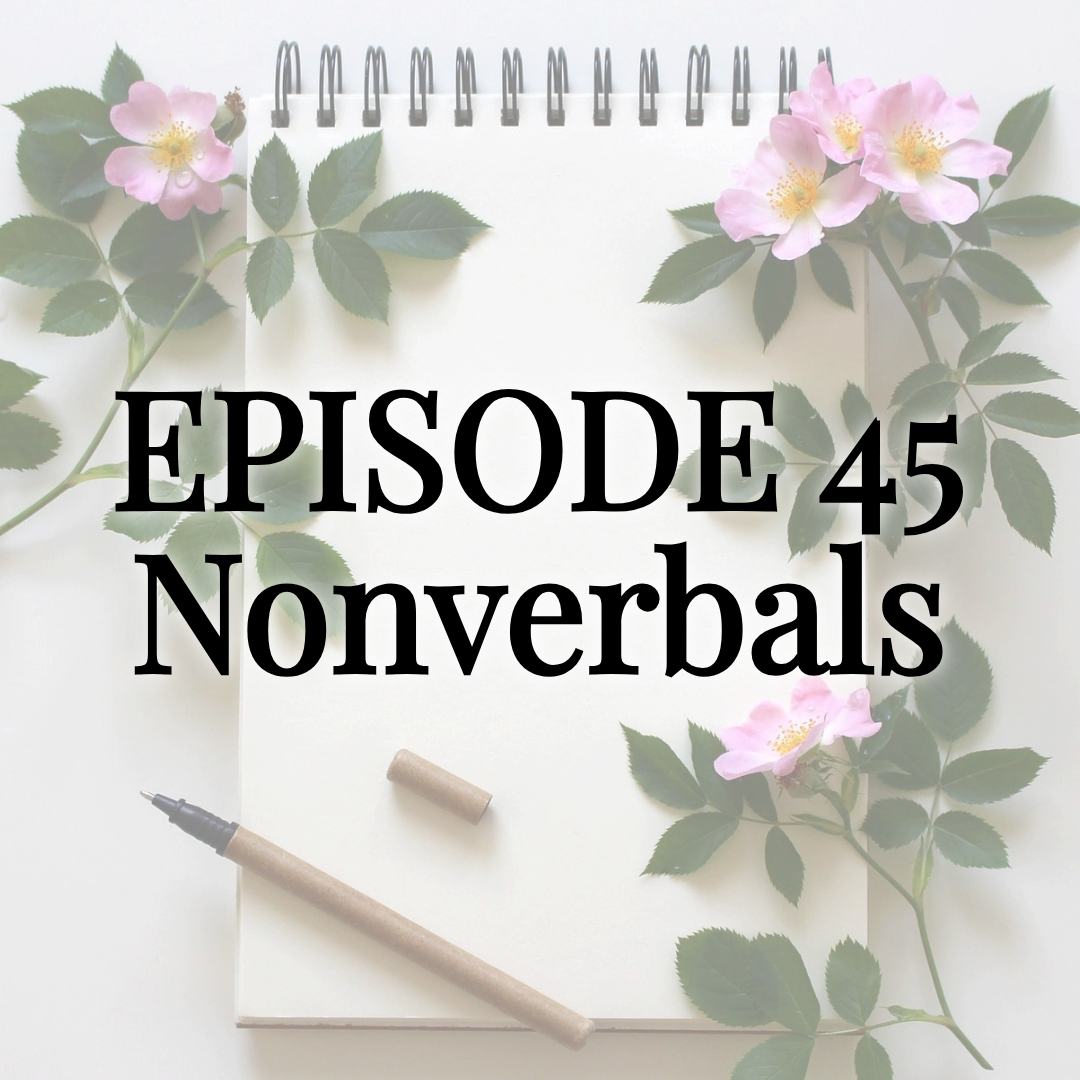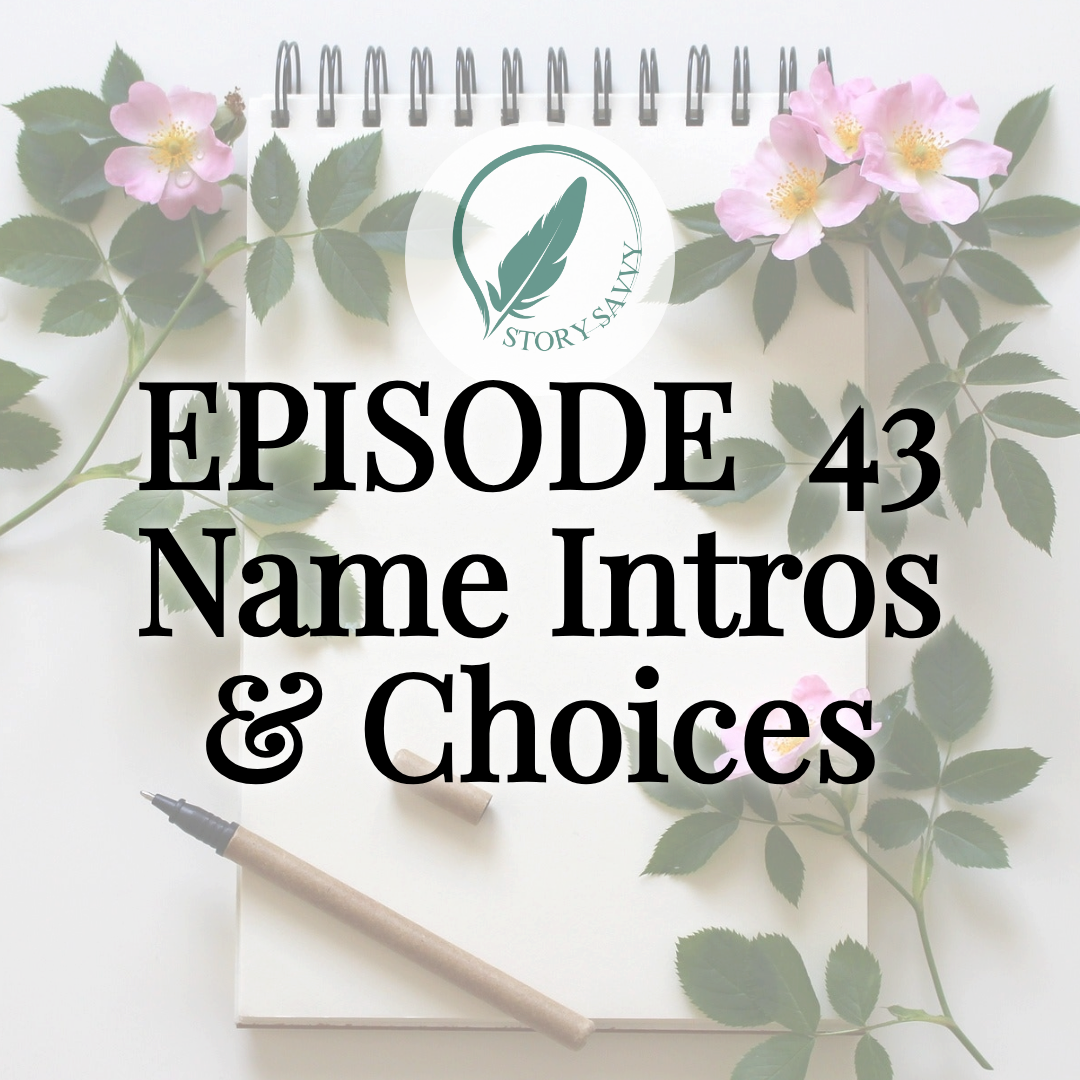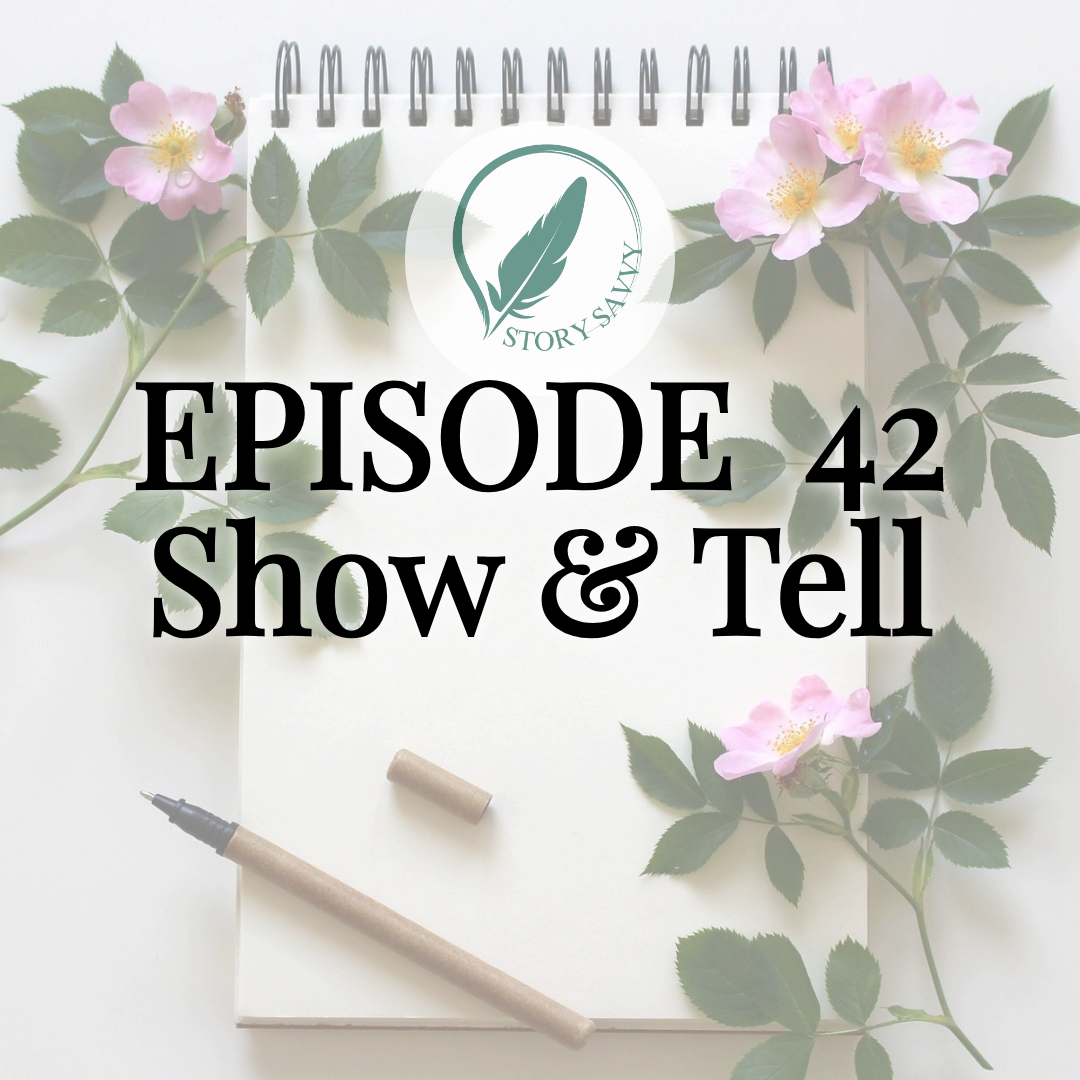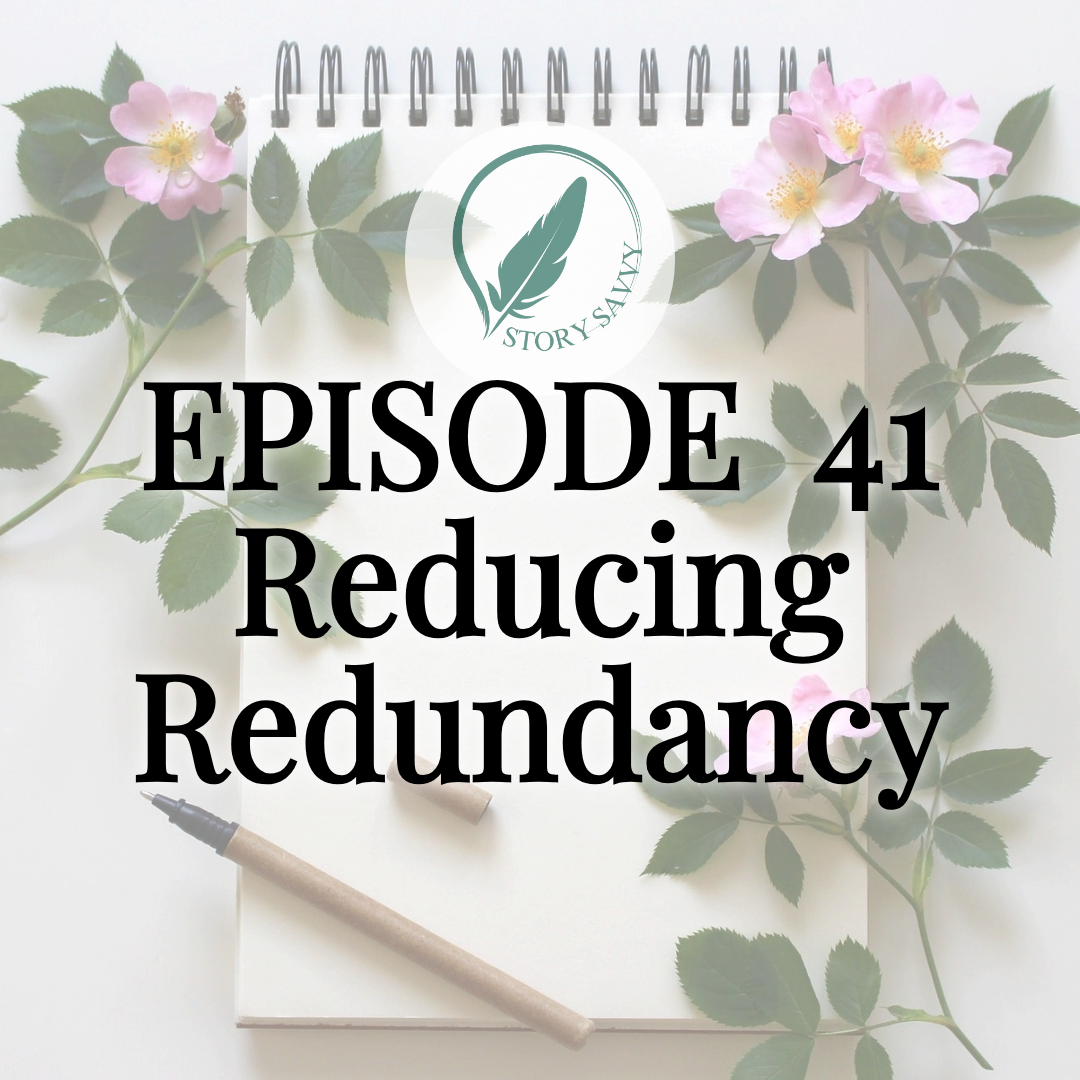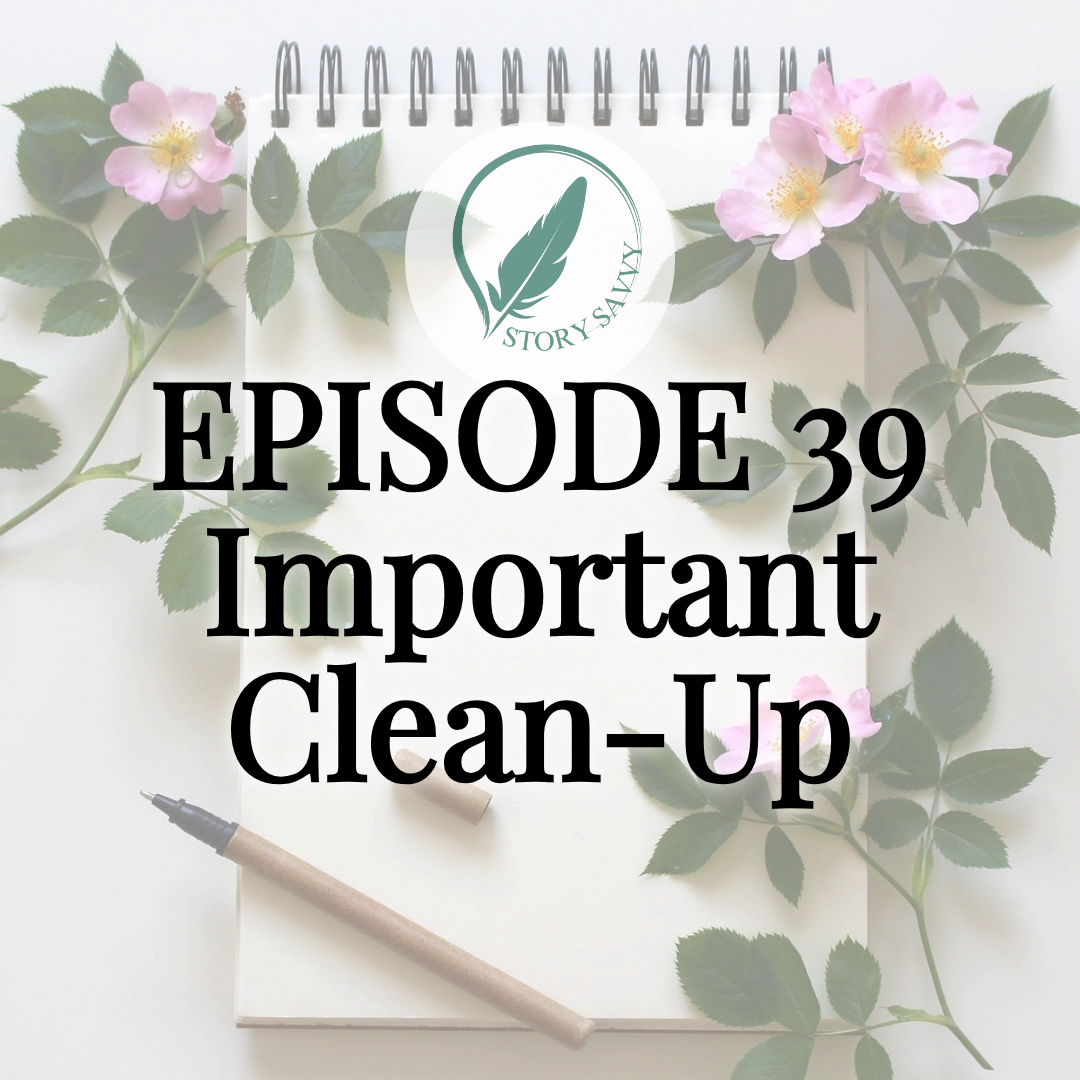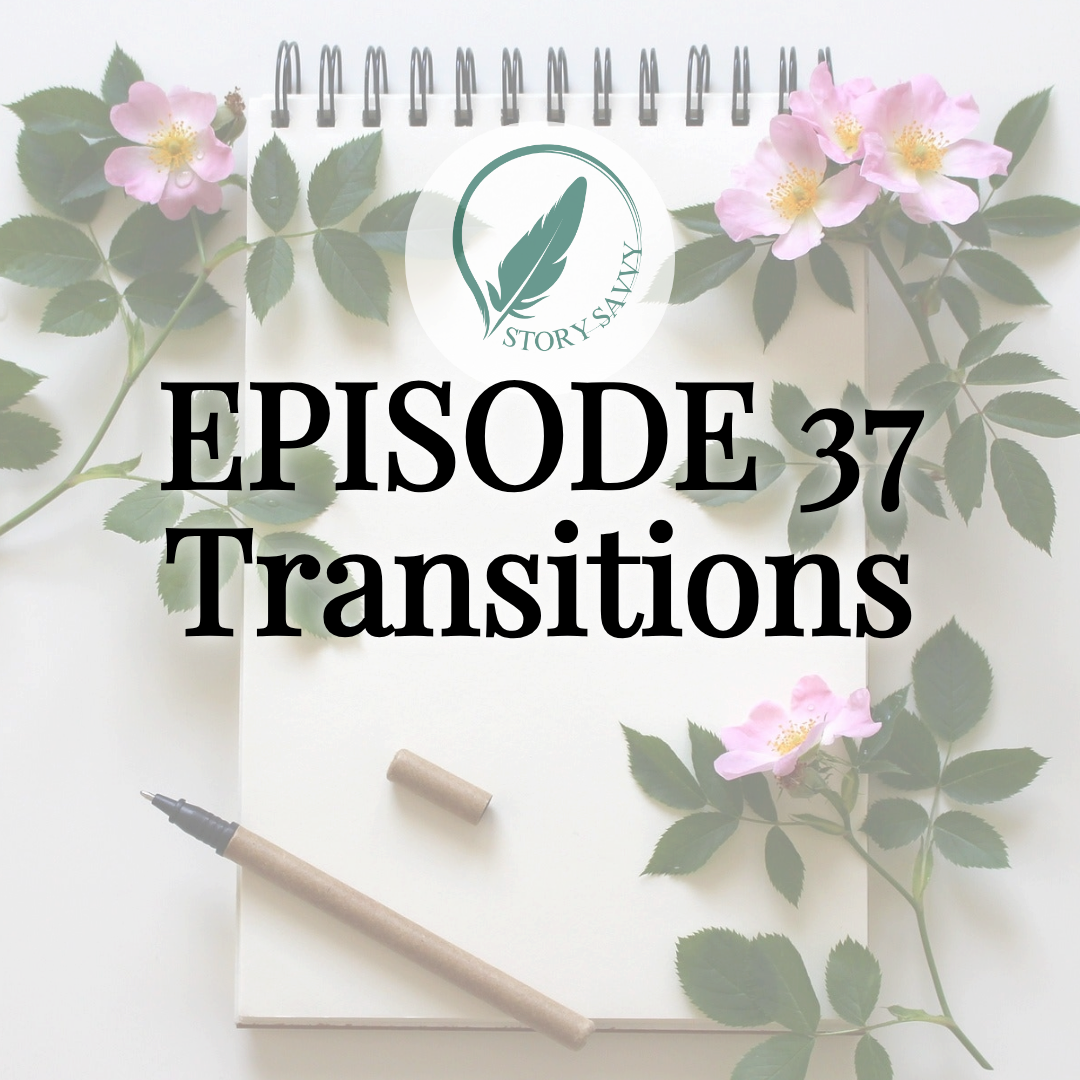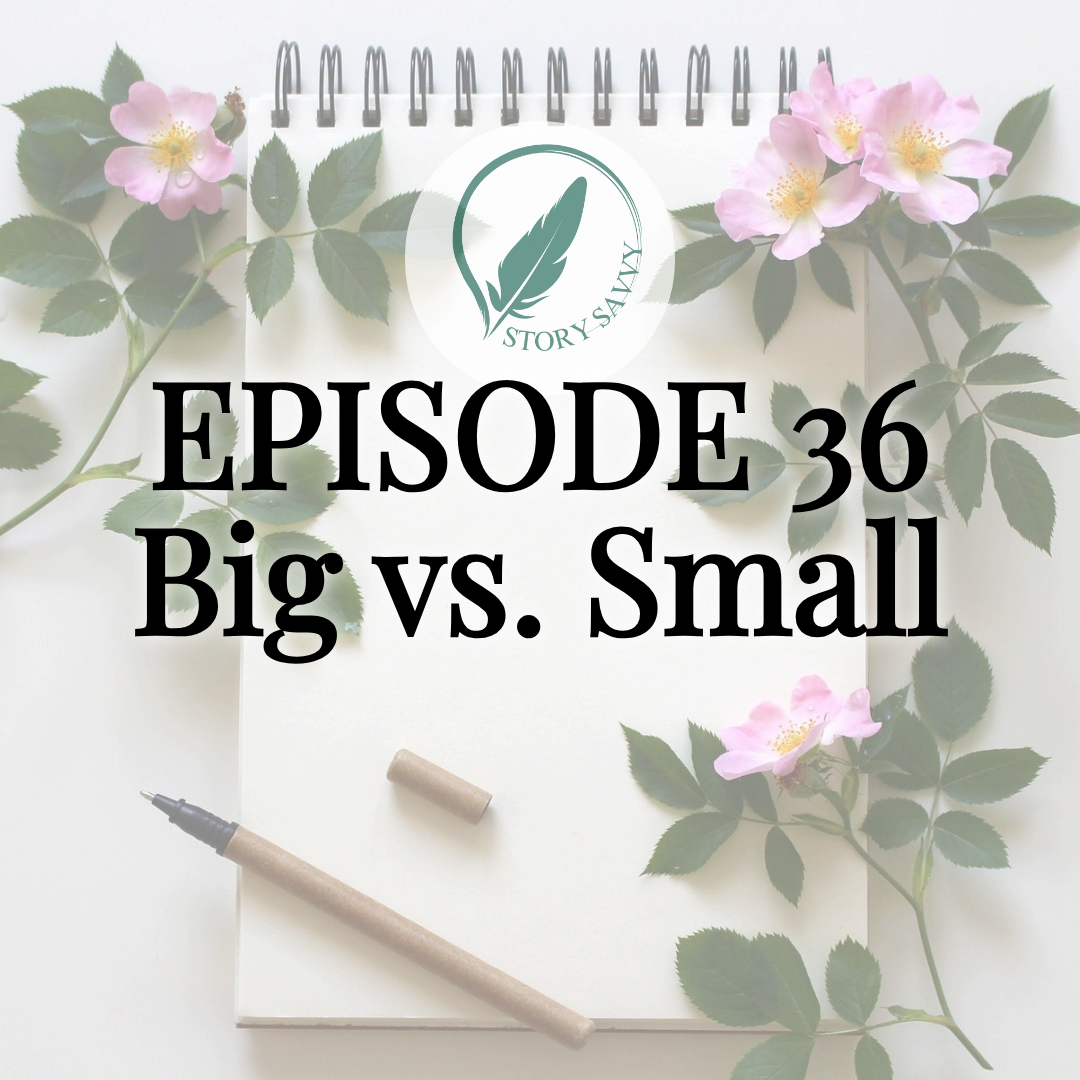Name Consistency & Regulation: Story Savvy Self-Editing Episode 44
Names Part Two: After-episode thoughts, overview, and transcript…

You can download the full checklist for this episode and the last one through BookFunnel here!
Another way to check if your unique invented word has actually already been invented before, as I mention in this episode, is to try saying it out loud to speech-to-text, like dictating to your phone. See what spelling it interprets from that which you may then be able to search for a definition on. For example, maybe you name a character Lagoobrias, sprung purely from the depth of your imagination. But, when you dictate it, your phone interprets it as lugubrious, which has established meaning. You can obviously assume readers won’t know it from its established use if you didn’t, but it’s always better to choose something willfully than run with it blindly.
To expand on another point in this episode:
With situations where a character has an old name and a new/truer name in play, when doing your checks, it’s very important that you only use each where appropriate. The most common mistakes I see around this is either using the new name accidentally before you meant to or it was properly introduced, or accidentally using the old name again after the switch without addressing it.
Lastly, the other episodes I reference in the transcript below can be found here:
Episode 12: Story Research (Including sensitivity issues)
Episode 43: Names Intros & Choices
Happy editing!
Episode 44 Overview:
Name Consistency & Regulation
“What aspects of replacing names and/or checking consistency around the names in my novel should I be going over in the self-editing process?”
In this episode, we explore self-editing names in fiction, including how to avoid similar character names and balance title vs name usage for clarity and reader immersion. You’ll learn practical self-editing character names strategies, naming conventions for authors, and how to apply developmental editing advice to keep your cast distinct and memorable. Perfect for writers looking to polish your manuscript, this episode blends self-editing tips for writers with actionable tools for fantasy novel editing and beyond.
In this episode, a sequel to last week’s episode on names, developmental editor Rebecca Hartwell answers questions from aspiring middle grade fantasy author Agnes Wolfe, turning a nuanced editorial checklist into practical guidance for working writers. Together, they unpack how character names impact clarity, pacing, and reader immersion during the self-editing stage, offering insights that apply whether you're writing epic fantasy, historical fiction, or contemporary drama.
In This Episode:
- Making a full list of your character names
- Avoiding visually or audibly similar names
- Ensuring invented names/terms are used frequently enough to matter
- Handling name changes, placeholders, and sensitivity issues
- Deciding when to name a character versus just giving them a descriptor
Resources
- Developmental Editing
- Names Checklist Handout - https://BookHip.com/XBMSATG
- Agnes Wolfe - agneswolfeauthor.com
- Dragonheart Academy - Dragonheartacademy.com
See you next week for episode 45: Nonverbal Communication: Better Immersion & Deeper POV
Episode 44 Transcript:
Name Consistency & Regulation
Rebecca Hartwell: Hello and welcome to the Hart Bound Editing Podcast. This is episode 44 of the weekly Story Savvy series, where we tackle the 52 biggest self-editing topics and tips. To help you make your good story great as an aspiring author asks me, a developmental editor, all of the questions that you have wanted to. We have covered so much in this series so far, including last week's episode on the first half of the topic of self-editing names in fiction, covering introductions and making choices around them. Today, we are going to take a look at consistency and regulation around the names in your book. By the end of this episode, every aspect around names will be stronger and more polished, hopefully, and you will have a comprehensive checklist to use in future projects around names. Joining me to ask all of the questions is my friend and co-host, Agnes Wolf. Hello.
Agnes Wolfe: Hi, I'm an aspiring fantasy author who hopes to release her first middle grade fantasy later next year and also host and founder of Authors Alcove. I'm here today to tackle the second half of this topic on names. So, do you want to just jump right back in where we left off last week? You were sharing different tips. Is that what you want to do?
Rebecca: Absolutely. So, we got through steps 1 through 7 last week. So, picking up where we left off, task number 8 on this checklist is … these are questions to ask yourself as much as they are tasks, so I've tried to phrase them as such, and that question is, what is my full list of character names, or characters? We touched on this briefly in an answer to one of your questions last week, but this is the moment to make that full list for yourself if you haven't already, before we go on further with this process.
Agnes: So, I know that I have a list of all of my characters' names, and it's listed kind of like a table of contents, where characters are listed individually with particular details, and I did this so that as my cast expands, I don't have characters that are too similar in names and stuff like that. What are ways that you feel I should handle this? Does it matter how or where we make our list, any specific advice? I know that I'm using Excel and Word documents.
Rebecca: I think that Excel is a particularly good idea, because then you can do first names in one column and last names in another, and make sure that neither set column is going to be overlapping too much with anything else, because then you can A to Z sort each column individually. So, I think that Excel or Google Sheets is a fantastic idea. I know that a lot of authors out there have character rosters of some description, so they'll have a whole character build with their age and maybe their physical description, and where they're from, and what kind of magic they can use, different things like that. And that's great, but if that's all spelled out in these big chunks, I recommend then taking those and making it into a shortlist, like you were just talking about, like a table of contents. Where you can still have all of that information but do have a list somewhere where it's just all of the names together so that, like you were just saying, you can visually assess all of them and look for comparisons or things that you need to change around that. So, question to ask yourself number 9 on my list here is, are any names or any proper nouns in general too similar visually or audibly when reading at speed that need to be changed? So you already touched on this, but it is very much checking that you aren't going to have a reader seeing a Serafina and a Sarah and getting visually confused, or let's say having a Sean, spelled S-E-A-N, and a Sean spelled S-H-A-W-N, which sound identical, so if this ever becomes an audiobook, that's a problem.
Agnes: So, I have to ask. First off, you know, how can we check the audible part? But where the complication comes in is when we are not sure if our readers are going to be reading the name correctly. For instance, I read the Harry Potter books before I knew what Hermione's name is, and so I read probably the first two full books before—I think in the second or the third book, she actually has the name written out. And I can't remember what it was, but it was probably something like Her-mone-ee or something like that. But she has it spelled out eventually. So how can we make sure, without doing what J.K. Rowling did, to make sure that our audience doesn't necessarily mispronounce and have names too similar, if that makes sense?
Rebecca: So, first of all, that's kind of unavoidable, unfortunately. Unless you are only producing an audiobook, there's going to be some level of that. So, do always check the visual similarity first, and then audio is second to that. But with that question about how do I know how they're going to pronounce it, there's a couple of options for that. First, Google the correct or standard pronunciation for a name, see if that's what you've been saying in your head, just as a beginning check there. But then also, especially if it's an invented name, try running it through any kind of text-to-speech software. So, write out the word, and then click a button and have pretty much any computer program read it to you and see what they say. But then also, just message friends and family, maybe pick 3 to 5 folks, and just be like, “Hey, will you send me a 2-second audio clip of you pronouncing this name however you automatically pronounce this name?” That's essentially how you can check that. So, task number 10, the question to ask yourself is, is each name on my list mentioned at least 3 times in the book? And this is specifically to check the relevance of all of the names on your list.
Agnes: So, I feel like this is a different scenario here than with step number one on this list. So again, but for this step, why is 3 the magic number? I notice 3 often comes up.
Rebecca: Yeah, the situation here is that if a character isn't being mentioned at least 3 times in the book, it might make more sense to not name them at all. So, if a character isn't being named 3 times in the book, it kind of falls into one of two categories. Either they used to be more relevant, or they're going to be more relevant in the future, so you're just trying to kind of keep them present and not forgotten, or they can just be scrapped. Entirely. So, when you're checking, if the name doesn't come up 3 times, you need to make that call. You need to decide to either make them more relevant in this book so that you're doing a better job of implanting them, or sorry, embedding them so that the reader will remember them, or you need to make that call of, “Well, I only mentioned them twice or once, or, really, only 3 times in this whole book, maybe I need to take this character out and give their roles to a character that is already more embedded.” That's essentially the… Again, 3 is just a magic number. Three is easy in fiction, it's a decent, tangible marker to give folks. It's not a hard line. I'm not going to get mad at anyone for having an important character that only gets mentioned twice. But the third option here is just to not name them. So, if this is a character that you want to introduce, or have do something small, try just giving them a placeholder title. Like, the innkeeper, instead of Dylan. When you name a character, it gives them importance, or at least the reader's going to perceive it that way. So, if you're not using a name at least 3 times in a book, it might make sense to say something like his first lieutenant, or the shopkeeper, or my uncle-in-law, something like that, where it's not a name that the reader's going to be expected to remember. So, task number 11 on our checklist here, that question is, are all of my invented words—so that can be for objects, for magic systems, for places, anything like that—are my invented words used at least 3 times? If not, do I want to reconsider just using an established, normal word for it, to avoid it coming across like a red herring or confusing my reader?
Agnes: Do you mind just re-explaining what a red herring is?
Rebecca: Yeah, so a red herring… I'm sure you can Google a more concise definition, but it's essentially when you present something like it's going to be a big deal, and a big hint or a clue, or whatever like that, and it ends up being a mislead, a false sense of that clue’s or that detail's importance. So, moving along from there, step number 12… The question to ask yourself is, If I have invented any names for my world or characters, have I checked a few different things around them? Number one, have you checked that they haven't actually already been invented for something else? You can check this just by googling the word, maybe try some different spellings that might be pronounced the same way, and make sure that you're not getting major hits if you want it to be really, really unique, or at least that the results you're getting aren't terrible. The second thing to check within this step is that none of your invented words—so specifically about objects and places and things like that—are too visually or audibly similar to other words in the book, or existing words. So, you can check this by saying them out loud, checking them with text-to-speech, asking some friends how they would pronounce that word, or just reading it and adjusting to what you were going for a little bit better. And to clarify this point a little bit more, because I realize I kind of got off track here, what I mean by being too similar to already existing words is, for example, I've edited fiction where someone had invented this very cool name for a character, but one of the vowels is pronounced exactly the same way as another vowel, and that word actually means something in the English language. And when I pointed it out to them, they were kind of shocked and horrified. So, you want to avoid accidentally doing that to yourself in your own work. And then very closely related to step number 12, question number 13 to ask yourself is, does my chosen spelling of a name sound how I want it to through one or more text-to-speech softwares? Especially if you're inventing names. If you put it through, let's say, Speechify, and Google Docs Read Aloud, and Microsoft Word Read Aloud, and none of them pronounce that name how you intended it to be perceived, you might want to tweak your invented spelling.
Agnes: That seems pretty straightforward.
Rebecca: Yep. So, question number 14 on our list here is… Are there any names that I want to change, either for sensitivity reasons, because they were placeholders, because the vibe of the character is different in reality than you expected when you were planning it, or for any other reason? And, very closely related to that, question number 15 is, am I consistent with my name for each character throughout? Have I double-checked that? And, have I checked that I didn't miss any uses of the old character name when I was changing it, perhaps due to spelling errors or any other reason like that? So, if your character was originally named Let's go back to Dylan, and you change it to Mortimer. then you need to do a search for Dylan, and make sure that you didn't miss any, but also, maybe check for near misspellings of Dylan in case that happened while you were drafting, and now it's not showing up in searches because it's one letter off. And then also, just to add a little bit to what I'd listed earlier about sensitivity reasons, maybe you had done research on that topic back when we did a whole episode on that, but you hadn't really picked a new name that felt better or more appropriate. Now is the moment to go research whatever sensitivity issues had come up, make that choice, and again, do a search and replace and check near misspellings, and implement that name that is less likely to bring up sensitivity issues with your readers, or potentially do so.
Agnes: On that sensitivity part, one of your comments, you had noticed in my first book was that my villains more often had names that are from outside of my culture, while my protagonists had names I consider more default names. Although there was a reason for that, and you get to learn that a little bit later on in the second book, when more of the characters are introduced, it did appear that way in my first book, so I did make some adjustments so that others would not feel that way in my first book before they understood the reasoning behind the cultured names. But I think this particular topic is a good thing for people to think about, especially in a sensitivity reading. What are your thoughts on that?
Rebecca: So, yeah, I feel like I kind of already touched on this, but it is a good point that sometimes, especially around names, you need to consider, is this getting explained now, or is it getting explained later? And knowing that your reader won't have information from their own reading future, do I need to step back? Do I need to reconsider this? And names are one of the, perhaps, more likely places to catch sensitivity issues, so even if you did do some of those checks earlier, now with names might be a good moment to just go, hey, here's my cast list with antagonist, protagonist, secondary character, good secondary character, bad secondary character kind of stuff listed next to them. And find someone who's a member of the culture that you're writing in, or that you think you might be overstepping a line with and just run it past them. Number 16 on our checklist here, last question to ask yourself is, are there multiple possible spellings of a character's name which I may have accidentally used, and/or, what ways have I personally caught myself misspelling one of my character's names in the planning stage, in drafting, or in editing? And if I make a list of all of those and search them, what results come up?
Agnes: So, I do have a question about this, because this is relevant to my particular story. What if an author has a character that intentionally goes by multiple names, like an old one and a new one? That's mine. But also, if there is actually a real reason why they might have two different spellings to the same name.
Rebecca: Sure, so if your character has an old name and a new name, and that's canon within this story, so they changed their name for some reason, that's fine. Just make sure that that's clear within the story. Make sure that the reader isn't going to get confused about it, and perhaps now and then, bring that old name back up and just go, “Oh yeah, no, I've changed my name.” It's all about clarity with the reader for that level of your question. As far as a reason to use multiple spellings— So, for example, just to clarify where I'm talking from here, I've already talked about misspellings a little bit, but there are names, like Rebecca, that have multiple spellings, or like Sean, like I mentioned earlier, that can be S-H-A-W-N or S-E-A-N. So, if you have a situation like this, if those are two different characters, that's a problem, you need to change one of the names. If that's the same character, but let's say one of the people within the story keeps misspelling their name, or you have a strong reason—like mistaken identity, or a letter getting sent to the wrong person kind of thing—where this misspelling makes sense, I have a couple very specific pieces of advice for that. First of all, make sure you only ever spell it one way in the narration. You as the author need to know the right spelling, and the wrong spelling should only ever come up when something within the world is spelled out with that wrong spelling, and you make it clear that this is a piece of writing in the world. rather than coming from the narrator, if that makes sense. And then my other piece of advice here is just handle it all carefully. Again, clarity for the reader about what the right spelling is, and especially the fact that both spellings refer to the same character needs to be fairly explicit on the page and brought up occasionally if it's an ongoing thing.
Agnes: Okay, so I do want to ask one last question before we go, and it has to do with actually my own writing, is, I was so afraid of being repetitive, and so I have a king in mind, and I refer to him sometimes as his name, sometimes as the king, sometimes… and I kept going back and forth because I didn't want to keep saying his name over and over and over. What are your thoughts on that, and how do you feel it's best to handle that?
Rebecca: Some of this choice is just stylistic. Meaning, it's down to things like genre, or just the personal tastes of the writer. I do recommend aiming for some level of balance between repetitive, so using the same name over and over, and confusing, where you're using a lot of variety. But that's a fairly subjective line to try to draw. If a client asked me about this, despite this topic being much more in the line-level edits than my own developmental wheelhouse, my answer would be roughly as follows. Number one, always use their full name with their title the first time the character is mentioned and the first time that they are introduced, if those are two separate moments. For example, perhaps your character is named and titled King Roland Fairhair, or something like that. Make sure that that's used the first time it's mentioned, and the first time he's introduced. Step number two in my advice here would be, if there is more than one king in the book, when they are being referred to when they aren't present, you probably always need to use the name instead of or in addition to that title that is shared with multiple characters. Point 3 would be, if there is more than one king on stage, so in the same room, in the same chapter, you must always use their names, otherwise it's going to get so confusing. Point 4 would be, barring all of those, I recommend using both the title and name if it's been more than one full chapter since the last time the name was mentioned. So, if you're only referring to him as the king for a chapter or two, you need to use his name again. Same thing goes for the other way around. Point 5 would be, I suggest paying attention to the difference in how the king is referred to in narration, so by you as the author. Which, using my example, might be the fair-haired king, to say, “Okay, the fair-haired king went to his palace.” And then comparing that against how that character is referred to by other characters when he's not around, so perhaps as King Roland. And then lastly, how he has addressed directly when other characters are speaking to him, such as, Your Majesty. Just having a different set that you can use in those three scenarios can help with that variety and keeping things from getting repetitive. And then lastly, as my best attempt at addressing that issue of being repetitive and boring, I would say that a decent rule of thumb would be to avoid using just the name, or just the title more than 3 to 5 times in a row without switching it up. And to make sure that you use both the name and the title regularly, however you want to define that particular phrase for yourself in this context. In my own books, I would say that it depends a little bit on the specific relationship between the POV character or the one speaking and the person being referred to, but I generally try to use the full name and title roughly once in each quarter or quadrant of the book to remind readers that all of those names and titles go together.
Agnes: Well, anyway, thank you so much for all of your insight. It really does help me so much.
Rebecca: Delighted to hear it. Next week, we will go over improving your use and descriptions of nonverbal communication in fiction through self-editing. For now, I really want to thank everyone following along with this series. If you know any other authors who are nearing the end of their first draft or struggling with revising or rewriting their novel, please send them our way. The more authors that we can help understand finish the process of self-editing, the better. Thank you all for listening in, and thank you, Agnes, for joining me today.
Agnes: No problem. And also remember that if you, yourself, are looking for a development editor, I know a very good one. You can go to hartboundediting.com.
Rebecca: And keep an eye out for Agnes' book next fall, I cannot wait to see how far it has come since the version I edited.
Rebecca: Thank you so much for listening to the Hart Bound Editing Podcast. I look forward to bringing you more content to help you make your good story great so it can change lives and change your world. Follow along to hear more or visit my website, linked in the description, to learn how I can help you and your story to flourish.
See you next time!
